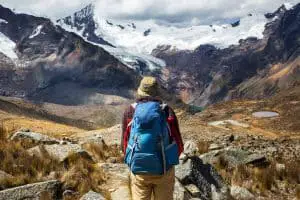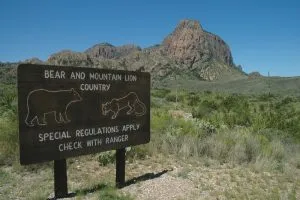How Much Firewood Do You Need for Camping? Find Out Now!

Heading out for a camping trip and wondering how much firewood you’ll need? Well, you’ve come to the right place! In this article, we’ll break down everything you need to know about estimating the amount of firewood necessary to keep your campfire burning bright.
When it comes to camping, having enough firewood is crucial for warmth, cooking, and creating that cozy campfire ambiance. But it can be tricky to determine how much firewood you should bring along. Factors like the length of your camping trip, the weather conditions, and the availability of firewood at your campsite all come into play. So let’s dive in and figure out just how much firewood you’ll need to make your camping experience unforgettable!
Quick Links
How to Calculate Firewood Requirements for Camping
When planning a camping trip, it is essential to estimate the amount of firewood you will need to ensure you stay warm and have enough for cooking meals. Calculating firewood requirements for camping can be done by considering factors such as the duration of the trip, the number of people, and the expected temperature. Here is a paragraph followed by a bullet list of steps to help you calculate your firewood needs for camping:
- Determine the length of your camping trip: Are you going for a weekend or an extended trip? The duration will influence the amount of firewood you need.
- Consider the number of people: More people means more firewood consumption, as each person may want their own fire or require additional warmth.
- Think about the activities: If you plan to cook all your meals over an open fire, you will need more firewood compared to if you are only using it for warmth.
- Take into account the expected temperature: If you are camping in colder weather, you will likely need more firewood to maintain a comfortable temperature throughout your stay.
- Research average firewood consumption: Look for average firewood consumption rates based on the factors above to get a general idea of how much firewood you might need.
- Consider gathering firewood on-site: If camping in an area where it is permitted, you may be able to gather firewood from the surrounding environment, reducing the amount you need to bring.
By following these steps and considering the specific details of your camping trip, you can estimate the amount of firewood you will need to pack or gather. It’s always better to have a little extra firewood than not enough, so err on the side of caution and ensure you will have enough to keep you warm and comfortable throughout your camping adventure.
Factors to Consider When Estimating Firewood Needs
With that said, several factors should be taken into consideration when estimating your firewood needs. Let’s get into them here:
Duration of the Camping Trip
The length of your camping trip will play a significant role in determining how much firewood you will need. A weekend getaway will require less firewood compared to an extended camping trip spanning several weeks.
Campfire Usage
Consider how often you plan on using the campfire during your camping trip. Will you be using it primarily for cooking meals, or do you also want to enjoy the warmth and ambiance in the evenings? The more frequently you use the campfire, the more firewood you will need to keep it burning.
Weather Conditions
Take into account the weather conditions during your camping trip. If you are camping in colder temperatures, you will need more firewood to keep warm throughout the day and night. Additionally, if it is rainy or damp, you might need extra firewood to ensure a reliable source of dry firewood for lighting and maintaining a fire.
Campfire Regulations
Check if there are any specific regulations or restrictions regarding campfire usage at your camping site. Some campgrounds may have rules about the size and duration of fires, which can influence how much firewood you need to bring along.
Availability of Firewood
Consider whether firewood is readily available at the campsite or if you will need to bring your own. If firewood is scarce at your campground, it is crucial to estimate your firewood needs accurately to avoid running out during your camping trip.
By considering these factors, you can estimate how much firewood you will need for your camping trip and ensure a comfortable and enjoyable outdoor experience.
Average Firewood Consumption per Night
As you can see, the amount of firewood required can vary depending on various factors, such as the climate, duration of the campfire, and personal preferences. By understanding the average firewood consumption per night, you can ensure that you have an adequate supply to keep your campfire burning. Here are some considerations and estimates to help guide you:
- Campfire Duration: The length of time your campfire will be burning each night will impact the amount of firewood needed. Generally, a campfire can burn anywhere from 2 to 4 hours, so plan accordingly.
- Size of Fire: The size of your fire can also influence the amount of firewood required. Larger fires will consume more wood to maintain their size and heat output.
- Climate and Weather Conditions: Cold weather or windy conditions may require more firewood to keep the fire burning and provide sufficient warmth.
- Activity Level: If you plan on using the campfire for cooking or boiling water, you may require additional firewood to sustain the necessary heat.
While it is difficult to provide an exact measurement, an average estimate for firewood consumption per night is around 10 to 15 pieces of firewood. However, it is always better to have extra firewood available, especially if you are camping in colder weather or anticipate using the fire for extended periods.
Remember to check any firewood regulations or restrictions in the area where you will be camping to ensure you are obtaining and using firewood responsibly. Always practice proper fire safety and extinguish the fire completely before leaving your campsite or going to sleep.
Different Firewood Types and Their Burn Times
When it comes to choosing firewood for camping, different types of wood can have varying burn times and qualities that can affect your camping experience. Understanding the characteristics of different firewood types can help you make an informed decision and ensure a successful campfire. Here are some common firewood types and their burn times:
Pine
Pine is a popular choice for campfires due to its abundance and ease of ignition. It burns quickly and produces a bright flame, making it ideal for getting a fire started. However, pine has a higher sap content, which can lead to more smoke and the potential for popping or crackling.
Oak
Oak is known for its long burn time and high heat output, making it a reliable choice for camping. It produces a steady flame and generates a good amount of coals, which are great for cooking over the fire. Oak can take longer to ignite compared to pine, so having some kindling or a firestarter can be helpful.
Birch
Birch is a hardwood that burns fairly quickly but produces a bright and hot flame. It is good for getting a fire going and can be easily split for kindling. Birch also produces a pleasant aroma when burned, adding to the camping ambiance.
Maple
Maple is another hardwood option that burns well and produces a steady flame. It provides good heat and can create long-lasting coals, making it suitable for both warmth and cooking. Maple is a popular choice for those who want a reliable and consistent fire.
Ash
Ash is a hardwood that burns evenly and produces a steady flame. It has a moderate burn time and provides good heat output. Ash is often preferred for campfires because it does not produce excessive smoke or sparks.
Remember to always follow fire safety guidelines and check with local regulations or campground policies regarding firewood collection and use. Additionally, consider using seasoned firewood, which has been properly dried and aged, as it burns more efficiently and produces less smoke. By choosing the right firewood type for your camping needs, you can create a cozy and enjoyable campfire experience.
Tips for Gathering Firewood Responsibly
When camping, it is important to gather firewood responsibly to protect the environment and ensure a sustainable supply of wood for future campers. Here are some tips to consider when gathering firewood:
Know the Rules and Regulations
Before gathering firewood, familiarize yourself with the rules and regulations of the camping area. Some campsites may have specific guidelines or restrictions on collecting firewood. It is essential to respect these rules to avoid damaging the environment or disrupting the ecosystem.
Use Dead or Fallen Wood
Focus on collecting dead or fallen wood for your campfire. This avoids unnecessary damage to live trees and promotes the natural decay process, which provides habitats for insects and other wildlife. Fallen branches or limbs can be easily collected without causing harm to the environment.
Keep Firewood Local
To prevent the spread of invasive species and diseases, it is best to gather firewood from the local area. Avoid transporting firewood from outside sources, as it may introduce harmful pests or pathogens to the campsite ecosystem. This practice helps maintain the ecological balance and protect the health of the forest.
Use Small Branches and Twigs
Utilizing small branches and twigs is an efficient way to gather firewood. These smaller pieces are easier to find and can be broken down into suitable sizes for your campfire. By using smaller wood, you can conserve larger logs for wildlife habitats and maintain the natural appearance of the campsite.
Respect Natural Features
When gathering firewood, be mindful of the surrounding environment and natural features. Avoid damaging or breaking branches from live trees, as this can have long-term effects on their health. Respect fragile areas, such as wetlands or stream banks, and refrain from collecting firewood from these sensitive locations.
Leave No Trace
After gathering firewood, make sure to leave the campsite as you found it. Remove any traces of your presence and properly dispose of any remaining wood or debris. Leaving a clean and undisturbed campsite ensures that future campers can enjoy the natural beauty of the area.
Methods for Storing and Transporting Firewood
Properly storing and transporting firewood is essential to ensure its quality and usability when camping. Here are some effective methods for storing and transporting firewood:
- Stacking wood off the ground: When storing firewood, it is important to keep it off the ground to prevent moisture absorption and rot. Use a raised platform or pallets to create an elevated surface for stacking the wood.
- Building a woodshed or firewood rack: Constructing a woodshed or using a firewood rack can provide a designated space for storing firewood. These structures help protect the wood from rain, snow, and other elements, ensuring it remains dry.
- Covering the woodpile: If a woodshed or firewood rack is not available, cover the woodpile with a tarp or waterproof cover. This will protect the wood from moisture and keep it dry for easy burning.
- Avoiding direct contact with the ground during transport: When transporting firewood to your campsite, use a wheelbarrow or a firewood carrier to keep it off the ground. This helps prevent the wood from picking up dirt, moisture, or pests.
- Securing the woodpile during transport: Make sure the firewood is tightly secured during transport to prevent shifting or falling. Use bungee cords, ropes, or straps to secure the woodpile to your vehicle or trailer.
Following these methods for storing and transporting firewood will ensure that you have a ready and dry supply of wood for your camping trip. It will also help maintain the quality of the firewood, making it easier to start and sustain a campfire for warmth and cooking.
Alternatives to Firewood for Campsite Cooking
While firewood is a traditional and popular choice for campsite cooking, there are several alternative options available. These alternatives can provide convenience, efficiency, and environmental benefits for outdoor cooking. Here are some alternatives to consider:
Charcoal Briquettes
Charcoal briquettes are a widely available and convenient option for campsite cooking. They provide a consistent and long-lasting heat source, making them suitable for grilling and other cooking methods. However, it’s important to choose charcoal briquettes made from natural materials without added chemicals or accelerants.
Propane or Butane Stoves
Propane or butane stoves offer portability and ease of use. They provide instant heat and precise temperature control, making them suitable for a variety of cooking needs. Propane or butane canisters are readily available and can be replaced when empty, ensuring a continuous cooking fuel supply.
Campfire Cooking Grills
Campfire cooking grills are specially designed for outdoor use and can be placed over an open fire or campfire pit. These grills allow for direct cooking on a grate, providing the smoky flavor and experience of traditional campfire cooking. They are versatile and can accommodate different cookware and food types.
Portable Wood Pellet Grills
Portable wood pellet grills combine the convenience of a propane or electric grill with the flavor of wood-smoked food. These grills use wood pellets as fuel, which are available in a variety of flavors to impart different smoky tastes to your dishes. They offer precise temperature control and are ideal for slow cooking or smoking.
When selecting an alternative to firewood for campsite cooking, consider factors such as portability, cooking method preferences, and environmental impact. Ensure you follow proper safety guidelines and regulations for the use of alternative cooking fuels and equipment during camping adventures.
Conclusion
When planning a camping trip, it is essential to estimate the amount of firewood you will need to ensure you stay warm and have enough for cooking meals. By considering factors such as the duration of the trip, the number of people, and the expected temperature, you can calculate your firewood needs for camping. Remember to gather firewood responsibly, respecting the environment and following campground regulations. Storing and transporting firewood properly will ensure its quality and usability when you arrive at the campsite.
Finally, consider the different firewood types and their burn times to create a cozy and enjoyable campfire experience. By taking these factors into account and planning accordingly, you can have a great camping trip with a reliable supply of firewood for all your needs. Stay warm, stay safe, and enjoy your time in the great outdoors!






